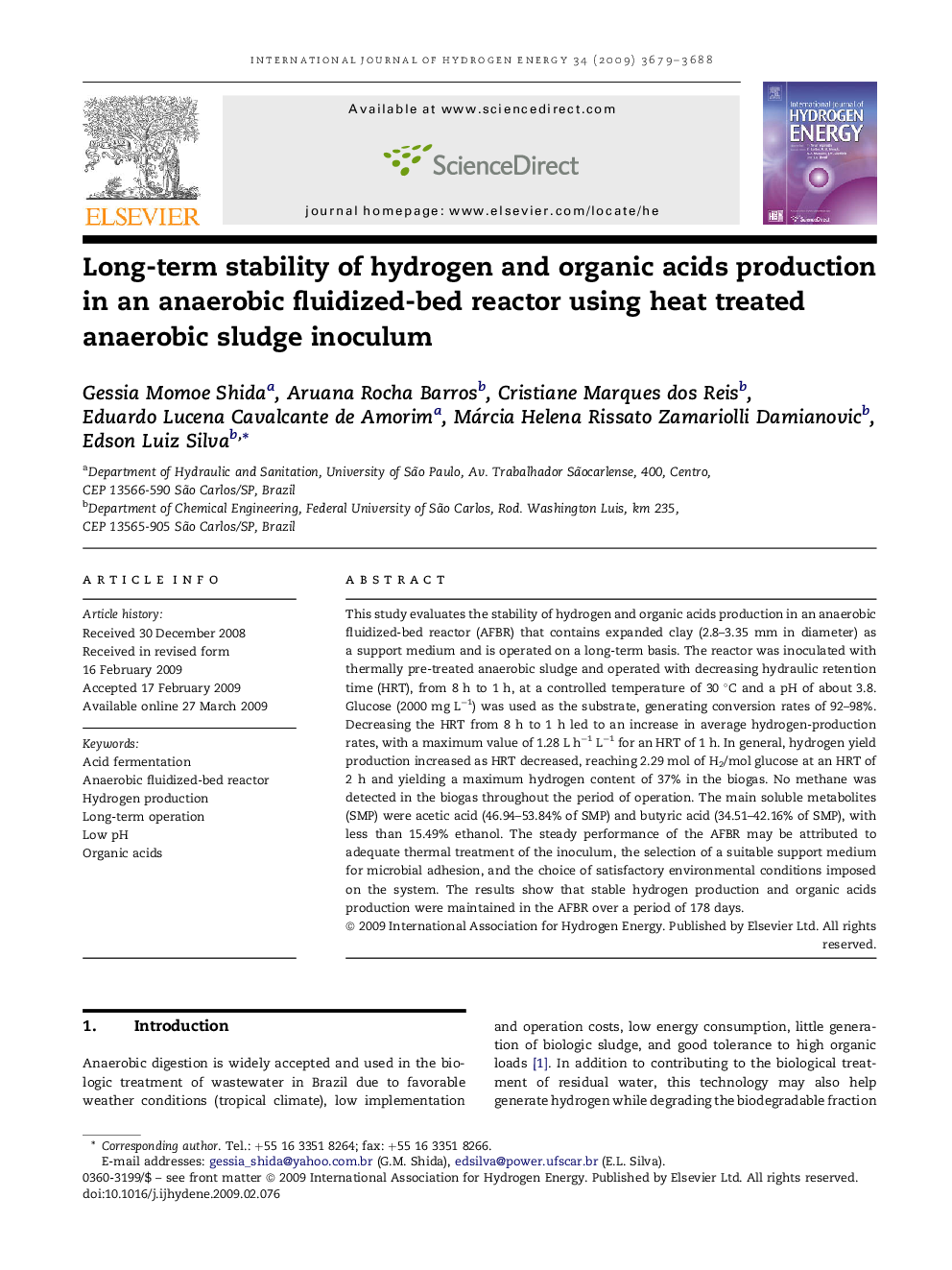| Article ID | Journal | Published Year | Pages | File Type |
|---|---|---|---|---|
| 1278998 | International Journal of Hydrogen Energy | 2009 | 10 Pages |
This study evaluates the stability of hydrogen and organic acids production in an anaerobic fluidized-bed reactor (AFBR) that contains expanded clay (2.8–3.35 mm in diameter) as a support medium and is operated on a long-term basis. The reactor was inoculated with thermally pre-treated anaerobic sludge and operated with decreasing hydraulic retention time (HRT), from 8 h to 1 h, at a controlled temperature of 30 °C and a pH of about 3.8. Glucose (2000 mg L−1) was used as the substrate, generating conversion rates of 92–98%. Decreasing the HRT from 8 h to 1 h led to an increase in average hydrogen-production rates, with a maximum value of 1.28 L h−1 L−1 for an HRT of 1 h. In general, hydrogen yield production increased as HRT decreased, reaching 2.29 mol of H2/mol glucose at an HRT of 2 h and yielding a maximum hydrogen content of 37% in the biogas. No methane was detected in the biogas throughout the period of operation. The main soluble metabolites (SMP) were acetic acid (46.94–53.84% of SMP) and butyric acid (34.51–42.16% of SMP), with less than 15.49% ethanol. The steady performance of the AFBR may be attributed to adequate thermal treatment of the inoculum, the selection of a suitable support medium for microbial adhesion, and the choice of satisfactory environmental conditions imposed on the system. The results show that stable hydrogen production and organic acids production were maintained in the AFBR over a period of 178 days.
